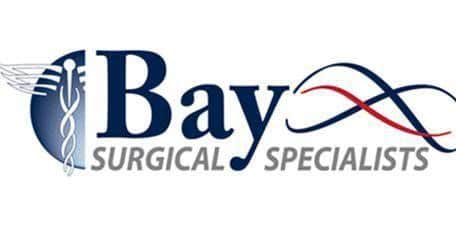Major Abdominal
The surgical team at Bay Surgical Specialists has years of experience helping patients overcome major abdominal medical issues, such as abdominal aortic aneurysms and blocked aortobifemoral bypasses.
What is an Aortic Aneurysm?
An aortic aneurysm is a malformation in the aorta that can be life-threatening. When an arterial wall is too thin to contain the blood flowing through the heart, the wall of the artery can weaken and a small section will stretch like a balloon. This balloon shape runs the risk of bursting and causing internal bleeding and damaging the aorta.
Sometimes an aneurysm can be found before an emergency. Early detection is ideal but not always an option. There are two primary ways to manage an aneurysm repair: open abdominal aortic aneurysm repair or an endovascular repair. A surgeon can make a determination of where the aneurysm is located and which procedure will be the safer, more appropriate option.
What is an Open Abdominal Aortic Aneurysm Repair?
To access the aorta area, the surgeon will make a cut in the chest or abdomen. Then they will clamp off the aneurysm before safely removing the weakened section of aorta (the aneurysm). The surgeon will then use a medical-grade fabric graft to repair and seal the removed section. Once the graft is securely in place, the clamps will be removed and the graft tested before closing the surgical site.
An open abdominal aortic aneurysm repair is a delicate procedure and requires several hours to perform. The patient will be under general anesthesia during the procedure and require a hospital stay to be monitored.
What is an endovascular aneurysm repair?
A second option to repairing an option is an endovascular route. Depending on where the aneurysm is located, a surgeon may perform a thoracic or thoracoabdominal repair with a minimally invasive surgery that implants a stent graft. An open aneurysm repair requires a larger incision in the chest, while an endovascular stent is placed using catheters. A small incision is made in the groin and the catheters are fed through the incision towards the heart. The catheter will place a stent graft inside of the aneurysm area to add stability to the artery wall. The catheter is then removed from the body and the patient’s blood flow is monitored.
What is an endovascular stent graft?
A medical stent is a small fabric tube made of medical-grade fabric wrapped around a metal wire fabric. The hollow center of the stent allows blood to flow it without adding pressure to the aneurysm.
Aortobifemoral Bypass
What is an aortobifemoral bypass?
Our surgical team will perform an aortobifemoral bypass surgery to help patients who have diseased or blocked blood vessels running between the aorta and femoral arteries in the legs. Unlike smaller stents, an aortobifemoral bypass may be necessary for areas where there are multiple blockages, significant narrowing or damage to the blood vessels.
This type of bypass surgery is done at a hospital and requires an incision to open the abdomen or groin to place a surgical graft. The graft is sewn on to an existing artery to create an artificial blood vessel, which can be used to go redirect blood flow around a blockage or diseased section. A surgeon will shape the graft into a y-shape, connecting the longer branch to the aorta and the two shorter branches above and below the affected areas of the femoral artery. The blood then travels along the graft bypassing the diseased section.
This is a significant surgery and will require general anesthesia and ample time to let the large blood vessels recovery in post-op and a monitored hospital stay.
Our surgical team can discuss these procedures, their risks and benefits, and answer any questions about pre- and post-operative activities.
Procedural & Resource Videos

